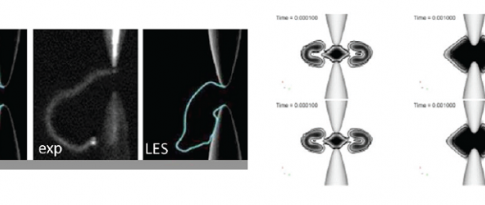01.03.2018
15 minutes of reading
Special issue: Motor Systems and Vehicles
 The transportation sector is evolving all the time and profound changes are yet to come. A major challenge
The transportation sector is evolving all the time and profound changes are yet to come. A major challenge
for future mobility, vehicle’s electrification will be accompanied by radical technological and software advances, with the increasing development of connected and driverless vehicles, incorporating, in particular, the principles of responsible eco-driving.
For all that, Internal Combustion (IC) engines will continue to dominate for a few more years to come. The focus must be on reducing their consumption (i.e. decreasing CO2) and their pollutant emissions, paving the way for the transition to low-carbon mobility.
In addition to the development of new software solutions and services for vehicle electrification and connected mobility, researchers from the Powertrain and Vehicle Division are channeling their expertise into addressing these challenges. Their aims today: to prepare for the changes that will take place in the distant future while going on improving the short term, essential for addressing the
needs of industry and society, working in partnership with internationally-recognized laboratories.
I hope you enjoy reading this issue.
Stéphane Henriot, Director of the Powertrain and Vehicle Division
Observation of soot in a diesel flame
The reduction in IC engine particle emissions requires a detailed knowledge of the physicochemical processes at work during combustion.
LES moves to rapid transients for cleaner powertrains
Gasoline direct injection engines emit soot particles during rapid transients. This still poorly understood phenomenon is taken into account during new
Where aviation fuels are concerned... compromise is the name of the game
In the aviation sector, fuels derived from hydrotreated vegetable oils (HEFAa) are seen as an alternative to petroleum based Jet A-1
Life and death of soot: a model to control the phenomenon
Vehicle approval standards require increasingly high levels of engine performance (low fuel consumption and low emissions) over a broad working range.
Ignition simulation
In order to reduce fuel consumption in gasoline engines, manufacturers are focusing their efforts on turbocharging and downsizing.
Pollutant emissions: better knowing them to fight them better
Vehicle approval certifies that the emissions of said vehicle meet the specifications imposed by existing standards.







